Durston X-Mid 2P Tent Review
The Durston X-Mid 2P Tent by Drop is an exciting entry into trekking pole supported tents. What sets it aside from the competition is a winning combination of low cost, low weight, a ton of livable area and great condensation control. Condensation is usually the Achilles heel of many trekking pole supported tents. The condensation in the Drop X-Mid 2P Tent is well managed by it’s being fully double-walled like a traditional dome tent, and by excellent cross ventilation from large, fully-adjustable doors on either side of the tent and large roof vents with kickstands to keep them open.
Note: this is a rigorously field-tested review of both the 2p and 1p tents for 10 days north of the Arctic Circle with strong winds at unprotected campsites, rain, freezing rain, sleet and even some snow.
To see the competition for the Drop X-Mid 2P Tent
See our Compared to Section to see how the X-Mid tents stack up against their closest competition.
And also see Best Backpacking Tents 2020 | Lightweight & Ultralight for a complete overview of the best tents on the market.
Key Specs | Dan Durston X-Mid 1P from Drop
Note: a key advantage of the 1P, one person model, is that it has two doors allowing for great cross ventilation and condensation control. In comparison most 1-person trekking pole supported tents have only one door with a solid back wall — this creates a ton of condensation which is difficult to impossible to manage.
Design: 1 person | 3+ Season | Double Walled, Trekking-pole tent
Features: Dual doors & vestibules, multiple cross-ventilation options, double-walled and lightweight
Weight: 1.7 pounds | 27.9 ounces | 791.7 g
Interior Space: 16.8 sq ft / 1.6 sq m
Vestibule Space: 23.2 sq ft (2x 11.6 sq ft)
Peak Height: 43 inches
Area / Pound: 24 ft2/lb
MSRP: $200
Key Features Durston X-Mid 2P Tent
Plenty of Livable Space & Light
The Durston X-Mid 2P Tent by Drop is a fully enclosed, double-walled tent supported by trekking poles. At 2.4 pounds, the two-person model is very light for a double-wall tent, with a highly livable interior and overall design. The 32-square-foot floor area and two vestibules (totaling 25 square feet) is ample space for two people plus gear, and comes down to 24 square feet per pound which is excellent for a double-walled tent — easily besting the livable area stats for lightest freestanding tents on the market like the 2020 Big Agnes Copper Spur HV UL2 Tent.
Tall hikers or semi-claustrophobics will love the 44-inch peak height, and the slightly odd, parallelogram-shaped footprint, which allows the taller partner gets more space to stretch out without an overall weight penalty.
Good Storm Performance
Both the Drop X-Mid 2P Tent and Drop X-Mid 1P Tent were great for weathering storms, as we found out during our ten-day testing stint in some of the most remote regions of Alaska. We encountered light snowfall and multiple days of heavy rain, and this tent stood up to the test. We especially appreciated the large livable area and good ventilation when weathering a 3 day stretch of near-freezing rain.
Key Specs | Dan Durston X-Mid 2P by Drop
Design: 2 person | 3+ Season | Double Walled, Trekking-pole tent
Features: Dual doors & vestibules, multiple cross-ventilation options, double-walled and lightweight
Weight: 2.4 pounds | 38.4 ounces | 1.09 kg
Interior Space: 32 square feet
Vestibule Space: 25 ft2 (2x 12.5ft2)
Peak Height: 44 inches
Area / Pound: 24 ft2/lb
MSRP: $280
Key Specs | Dan Durston X-Mid 1P from Drop
Note: a key advantage of the 1P, one person model, is that it has two doors allowing for great cross ventilation and condensation control. In comparison most 1-person trekking pole supported tents have only one door with a solid back wall — this creates a ton of condensation which is difficult to impossible to manage.
Design: 1 person | 3+ Season | Double Walled, Trekking-pole tent
Features: Dual doors & vestibules, multiple cross-ventilation options, double-walled and lightweight
Weight: 1.7 pounds | 27.9 ounces | 791.7 g
Interior Space: 16.8 sq ft / 1.6 sq m
Vestibule Space: 23.2 sq ft (2x 11.6 sq ft)
Peak Height: 43 inches
Area / Pound: 24 ft2/lb
MSRP: $200
Photo from our testing trip in Alaska, June 2020. The X-Mid 2P &1P Tents stood up to a variety of subpar weather conditions.
What is Drop?
Drop (formerly Massdrop) is an innovative company based in California that uses data and insights from different consumer communities to develop and sell products in various verticals. Their outdoor gear has included partnerships to build trekking poles, sleeping pads, shelters, and more.
Dan Durston Partnership
Drop partnered with thru-hiker Dan Durston to develop a lightweight, durable tent that could stand up to a variety of conditions. Drop aimed for a smart design to cut down on setup time and avoid the Achilles heel of single-wall trekking pole shelters: condensation buildup.
Overview of the Drop Dan Durston X-Mid 2P
The X-Mid 2P is a trekking-pole supported, double-wall tent. The shape is a dual apex pyramid, similar to the Tarptent Stratospire 2, Sierra Designs High Route 1 FL Tent and REI Flash Air 2 Tent. The inner tent has fully enclosed netting with a bathtub floor, which means you get the best of both worlds—a double wall for protection against condensation with the lightweight and smart design of a trekking-pole supported shelter. Condensation is the Achilles heel of single-wall tarp tents, and between the double-wall design and the dual doors, this tent removes a lot of those issues. On top of that, you get a reasonably light shelter with double-wall protection.
Users will notice that the floor is a slightly odd shape—a parallelogram—and has a large footprint. This is convenient, as it allows the taller of the pair of hikers to sleep with more foot room.
The Tent’s 4 stake setup, and rectangular footprint make for easy pitching compared to most trekking pole shelters (altho we still recommend you used 6 stakes in unprotected campsites).
One of the only downsides to the design of the tent is the large sidewalls, a necessity for the doors. On these large walls, there is no tie-out (guy line) in the middle. This isn’t as much a structural issue, but you get some significant deflections in strong wind. This means the walls can move in the wind and can get pushed into the interior walls without middle guy outs.
Summary
Hikers can feel confident using this tent for 3+ seasons based on the configuration of setup. It’s lightweight, spacious, simple to set up, and sturdy once it’s pitched. This isn’t a super well-known tent, especially with the two-person model, so we were happy to get it out for a test. And even more happy with its performance by the end of our AK trip!
What’s Great about the X-Mid 2P
Below we list the key features that make the Dan Durston X-Mid 2P Tent a standout.
Livable Space
The livable space is excellent. We found there was plenty of space for people and gear, and lots of room for shoulders and sitting up in the tent. It’s 47 ft2 of area (floor+vestibules) is much larger than the best freestanding tents like the 2020 Big Agnes Copper Spur HV UL2 Tent (which is also 1/2 of a pound heavier). Taller hikers will appreciate the odd-shaped floor to allow them to stretch out, and the 44-inch peak height is purely luxurious.
The only downside — the large footprint can be a challenge for small campsites. Again, this is an unavoidable consequence of the high livability of this tent’s 47 ft2 of living area. You can’t have your cake and eat it too.
Useful Pockets
Interior pockets make it easier to organize small belongings. There are four generously sized and well-located pockets — two on each side of the tent. This keeps key items like glasses or a headlamp easily found and easily accessible.
Drop XMid 1P tent after a rough night
Storm Worthiness
Both the Drop X-Mid 2P Tent and Drop X-Mid 1P Tent (we tested both) were great for weathering storms, as we found out during our ten-day testing stint in some of the most remote regions of Alaska. We encountered light snowfall and multiple days of heavy rain, and this tent stood up to the test. We especially appreciated the large livable area and good ventilation when weathering a 3 day stretch of near freezing rain.
The tent sheds snow and rain well, so you can stay comfortable and not worry about precipitation sagging the top down. The SilPoly fabric is less prone to absorbing water and stretching when wet than the Nylon or SilNylon fabric used on most tents. This means less wall sag and less fiddling with tie-outs to retention the tent. Our only complaint was a some tent wall deflections in high wind. To be clear this was not a structural issue, it just had the large side walls of the tent flexing a bit inward in high wind gusts.
Superior Ventilation
One of the biggest strengths with this shelter is the cross-ventilation, which means low condensation buildup.
Users can open the door on both sides to get great cross ventilation. Users can also customize the doors, from awnings to different configurations of openings, as well as deciding to open them windward for additional leeward shelter. Overall, there are lots of options for customizing ventilation based on conditions.
Convenient “kickstand vents” provide even more opportunity for air flow. Kickstand vents are an effective way to ventilate a shelter, as opposed to smaller peak vents on other tents. Kickstands are small struts that prop open part of the fly to create a vent, which allows air to circulate, further reducing condensation.
Variability in Pitching | Inner Only
The inner body can be pitched separately for full bug protection, while still allowing for great views and ventilation. The outer tent can be pitched as a spacious single-walled tarp/tent as well. This gives you a lot of customization that most trekking pole supported tents do not.
Variability in Pitching | Fly Only
The outer tent can be pitched as a spacious single-walled tarp/tent as well. This gives you a lot of customization that most trekking pole supported tents do not.
Recommendations for Improvement
Below we list some changes that would make the Drop X-Mid 2P and 1P Tents even better:
- The large, unsupported side panels on the outer tent definitely could use an additional tie-out points. Not a huge showstopper structurally, but means the walls deflect more than is optimal.
- We’d like to see the doors with double slider zippers and clip-buckle fastener at bottom of zipper
- Ideally, the inner-tent-only pitch would be slightly more user friendly. It needs a way to easily attach the ridgeline guyots to it. Right now knotting to the buckle is fine for those who are comfortable tying knots.
- SilPoly, while significantly inexpensive, is not as stiff or as strong DCF. But SilPoly has advantages over SilNylon tents, it absorbs less water and sags less when wet. What little stretch there is can easily be fixed by re-tensioning the guy outs.
- The guy lines are too thin for our tastes. We replaced them with 2.5mm cord. [understand that the next run of tents will come with 2.5mm cord]
- We suggest upgrading stakes to either Al Y-stakes, or Al nail stakes
Compared To
The most comparable tents by design are fully double-walled dual apex pyramid tents supported by trekking poles. But we also cover a few hybrid, single-walled/double-walled tents. And one traditional, free-standing ultralight tent.
Fully Freestanding (traditional) Ultralight Tents
We’ll use the highly regarded Big Agnes Copper Spur HV UL2 2020 as a representative for this class of tents.
Big Agnes Copper Spur HV UL2 (2020)
Compared to the Big Agnes Copper Spur HV UL2 (2020), the Drop X-Mid 2P costs $170 less, is ½ pound lighter, and has a more livable area — 30% more vestibule area and 10% more floor area. The Drop X-Mid’s SilPoly fabric absorbs far less water when wet (i.e. it is even lighter when you pack-up in rainy conditions). It’s a great tent for weathering out a long rainstorm.
Both tents are fully double-walled and have dual doors for cross ventilation so their condensation resistance should be similar. And both offer fly-only, or inner-tent only pitches. We love the new awnings on the Copper spur but the larger doors on the X-Mid 2P can be pitched similarly with a trekking pole.
Pluses for the Big Agnes Copper Spur HV UL2 are that it is fully freestanding. Campers just love this design, and for the casual user this design is easier to pitch and does not require staking out (altho we highly recommend that you stake out even freestanding tents). We are big fans of all the inner pockets on the Copper Spur which make organizing the inside of the tent a breeze and it so easy to locate essential items. Finally, the Copper Spur fits in a smaller campsite and it is available off the shelf from possibly the most highly esteemed and trusted US based tent design company.
Trekking Pole Supported Tents
The most comparable tents by design are fully double-walled dual apex pyramid tents supported by trekking poles.
Tarptent Stratospire 2
Compared to the Tarptent Stratospire 2, its most direct competition, the Drop X-Mid 2P is nearly $100 less, ¼ pound lighter, and its SilPoly fabric sags less when wet and absorbs far less water when wet (i.e. it a lot lighter when you pack-up in rainy conditions). It has simpler to understand rectangular, 4 stake pitch. And we give it a slight nod for surviving high winds (assuming you use our recommended stakes in tips below). In Tarptent’s favor is that it is usually in stock (X-Mid is intermittently available), and the Tarptent has a 30d Silnylon floor that can usually be pitched without the need of a footprint.
Sierra Designs High Route FL 1
Compared to Sierra Designs High Route FL 1, its most direct competition, the Drop X-Mid 1P is $100 less, a bit lighter, and has a ton more area. The Drop X-Mid 1P’s SilPoly fabric sags less when wet and absorbs far less water when wet (i.e. it a lot lighter when you pack-up in rainy conditions). The High Route FL 1 might do a tad better in strong winds in an unprotected site and it’s smaller footprint will fit into smaller sites.
REI Co-op Flash Air 2 Tent & REI Co-op Flash Air 1 Tent
The other trekking pole tents we’ll compare to the Drop X-Mid 2P Tent & 1P Tent are the REI Flash Air Tents. The significant difference is that the REI Flash Air Tents are not fully double-walled but a hybrid of single and double-walled construction. We include these REI tents since they are readily available by a large commercial retailer — and because we like the design.
REI Co-op Flash Air 2 Tent
Compared to the REI Co-op Flash Air 2 Tent, the Drop X-Mid 2P is $20 less, a bit lighter, and has a more livable area. The Drop X-Mid 2P’s SilPoly fabric sags less when wet and absorbs far less water when wet (i.e. it a lot lighter when you pack-up in rainy conditions). And the fully double-walled construction of the Drop X-Mid 2P handles condensation better. Finally, because of the “inner-tent” and “outer-tent/fly” there is no option for a fly-only or inner-tent pitches. On the plus side, the REI Co-op Flash Air 2 Tent is ½ pound lighter, fits in a smaller campsite and it is available off the shelf from a major and trusted retailer.
REI Co-op Flash Air 1 Tent
Compared to the REI Co-op Flash Air 1 Tent, the Drop X-Mid 1P is $50 less, and has a ton more livable area and has a back door and back vestibule (the REI tent only has a front door & vestibule). The Drop X-Mid 1P’s SilPoly fabric sags less when wet and absorbs far less water when wet (i.e. it a lot lighter when you pack-up in rainy conditions). And the fully double-walled construction of the Drop X-Mid 1P handles condensation better. In addition, the additional single wall on the rear of the tent and no rear door for cross ventilation increase condensation in the Flash Air 1 vs. the Flash Air 2 and the X-Mid 2P. Finally, because the “inner-tent” and “outer-tent/fly” are a single unit, there is no option for a fly-only or inner-only tent pitches. On the plus side, the REI Co-op Flash Air 1 Tent is lighter, will fit in much smaller campsites and it is available off the shelf from a major and trusted retailer.
Other Single-Walled Tents (at least partially single-walled)
Most other trekking poles supported tents, many of them reader favorites like the Six Moon Designs Lunar Duo and Tarptent Double Rainbow, are not listed in the comparison here because they are not fully double-walled — but a hybrid single-walled/double-walled design. That is the ceiling, foot end, and head-end walls are single-walled. The downside for this is that they are more prone to condensation issues. In addition, many of 1P versions of these tents usually only have one door and a solid rear wall. This increases condensation by the adding another single wall panel, and because there is no rear door to allow cross-ventilation thru the tent. Finally, because the “inner-tent” and “outer-tent/fly” are a single unit, there is no option for a fly-only or inner-tent only pitches.
Tips and Tricks for Using the X-Mid 2P
Protect the Floor | The 20d tent floor will most likely need a protective ground cloth underneath for protection on sharp surfaces. recommend putting a $12 Gossamer Gear Polycro Footprint or MLD UL FOOTPRINT under it.
Leave Inner Tent Attached | Most of the time you’ll use both the inner tent and outer tent (fly). In this case, it is easiest to just leave the inner tent clipped to the outer tent which saves time both pitching and taking down the tent.
Upgrade the Stakes | We suggest upgrading stakes to either TNH ‘Y’ Tent-Stakes or Aluminum nail stakes (our current favorites).
The floor corners do not need to be attached to the outer tent | These can be detached and staked out separately — especially good for very uneven ground. We suggest you carry 4x small light stakes for this, like a MSR Mini Ground Hog Stake or the MSR Carbon Core Tent Stakes.
The perfect Pitch | Here are some tips for getting the tent square, and how to tell if it’s not square.
Getting the Perfect Pitch for X-Mid 2P & 1P
When the tent is pitched square, you have two diagonals across the tent (green, pink) that should be the same length. This is the intended shape of the tent, so it will be evenly tensioned when it is staked square like this. One of the indications that this is not right is that the ridgeline is still slack with everything tightly staked out.
How to Detect a Less-than-perfect Pitch
If the rectangle is a bit off, it can be tilted to the left or right. If it’s tilted to the left, then the green distance gets longer while pink distance shorter. In that case, you have a slack ridgeline because the ridgeline is longer than the pitch distance. The height of each pole is limited by the lines of tension to the nearby 3 stakes, so when the green distance gets longer that pulls things tighter along some of those seams, so the pole height is limited a bit too soon and before the ridgeline gets tight. The opposite is true if it’s tilted to the right. The pink distance gets longer so it will pull the ridgeline tight while things may be a bit loose still in the opposite direction, although a slight tilt to the right tents is the lesser evil as it gives a better pitch than a tilt to the left.
How to Fix the Pitch
The solution here is a fairly simple one. If you recognize this (e.g. loose ridge line) all you have to do is loosen the green distance as well (e.g. loosen the two corners along the green line) and then the poles can extend taller to pull the ridgeline taut. The opposite is true if the ridgeline is tight while the other direction is a bit loose.
Uneven Ground
Finally the pitching can be a bit wonky on uneven ground especially when one corner is significantly higher or lower than the others. This true for most pyramid-style tents. Detaching some of the corners of the inner tent and staking them out independently can help. Other than that, taking a pause and thinking things out a bit generally leads a solution.
Conclusion
This is a well-designed tent made by someone who has hiked a lot of miles. It’s well-engineered for livable space, relatively easy to pitch, and the double-wall design is a key factor in reducing condensation. We love the ease of use with the two doors and vestibules, and overall it’s a very reasonably priced tent.
We’d like to see guy lines on the walls of the tent to prevent deflection, and this tent does take some practice to get the correct shape and orientation. Also, be aware it has a large footprint and may be challenging to pitch in tight spaces. This tent is comparable to the REI Flash Air but with superior ventilation and a more livable area.
Depending on where you camp, the X-Mid’s floor fabric will do well with some protection. To protect the floor of very light tent floors (less than 30D), we recommend putting a $12 Gossamer Gear Polycro Footprint or MLD UL FOOTPRINT under it.
Looking for More?
For tents in the same class check out our 2020 Best Backpacking Tents | Lightweight & Ultralight. And in particular:
Traditional Lightweight Backpacking Tents | 2.5 to 3.5 lb oz | $350 to $450
The 1st choice for many backpackers, these are the “classic,” full-featured, easy-to-setup tents most are familiar with. Carefully selected, the tents in this guide are lighter than most backpacking tents while still being storm-worthy and bug-proof.
Single Wall Tents | 1.2 lb to 2.6 lb | $260 – $680
Single-walled tents are quickly rising in popularity. In fact, some single-walled tent brands are now more popular than some well known double walled tent brands. This makes sense, as a single-walled tent has most of the benefits of a double-walled tent, but for much less weight.
Disclaimer
This post contains affiliate links. If you make a purchase after clicking on the these links, a portion of the sale helps support this site at no additional cost to you. I do not receive compensation from the companies whose products are listed. For product reviews: unless otherwise noted, products are purchased with my own funds. I am never under an obligation to write a review about any product. Finally, this post expresses my own independent opinion.

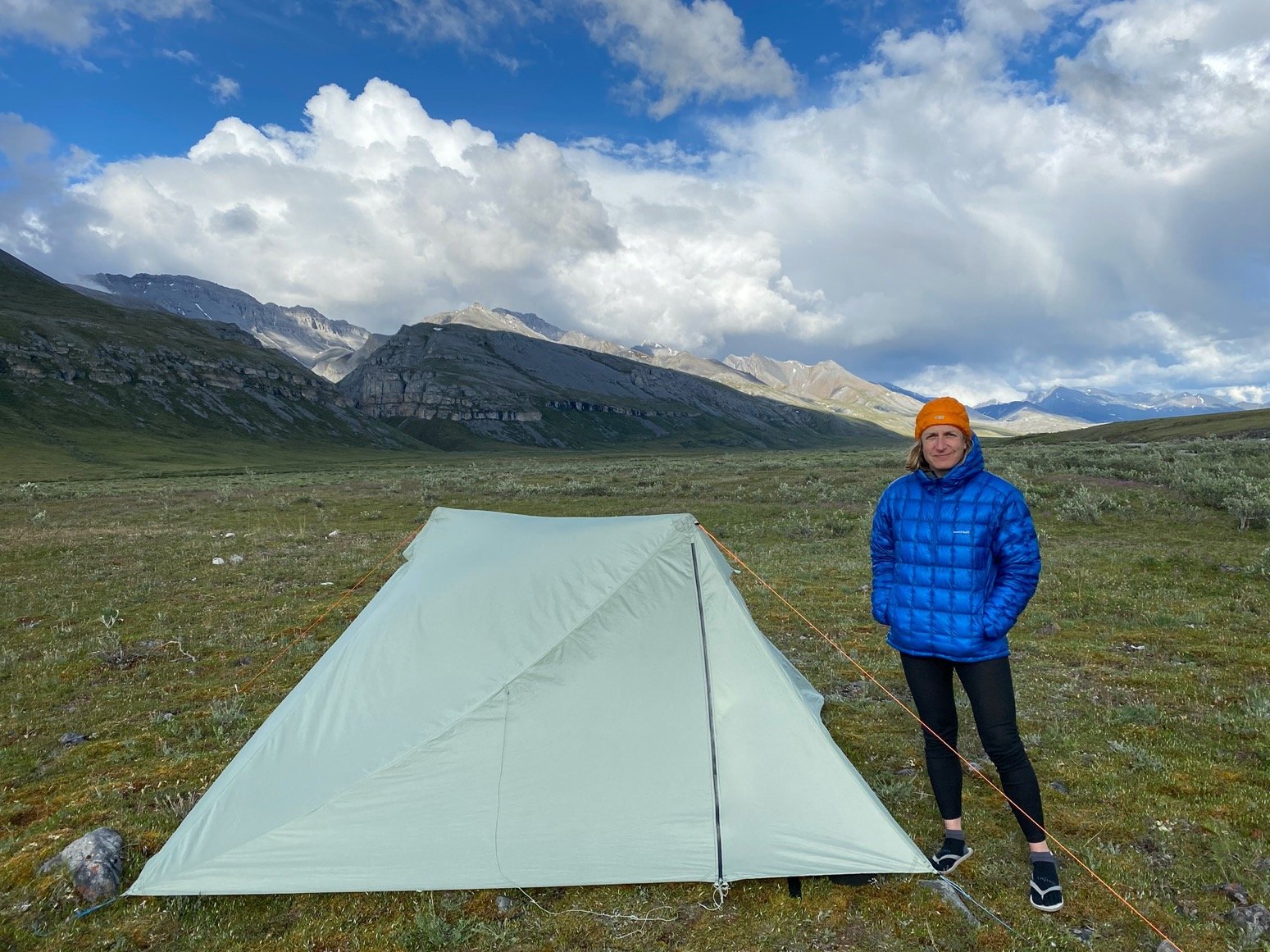
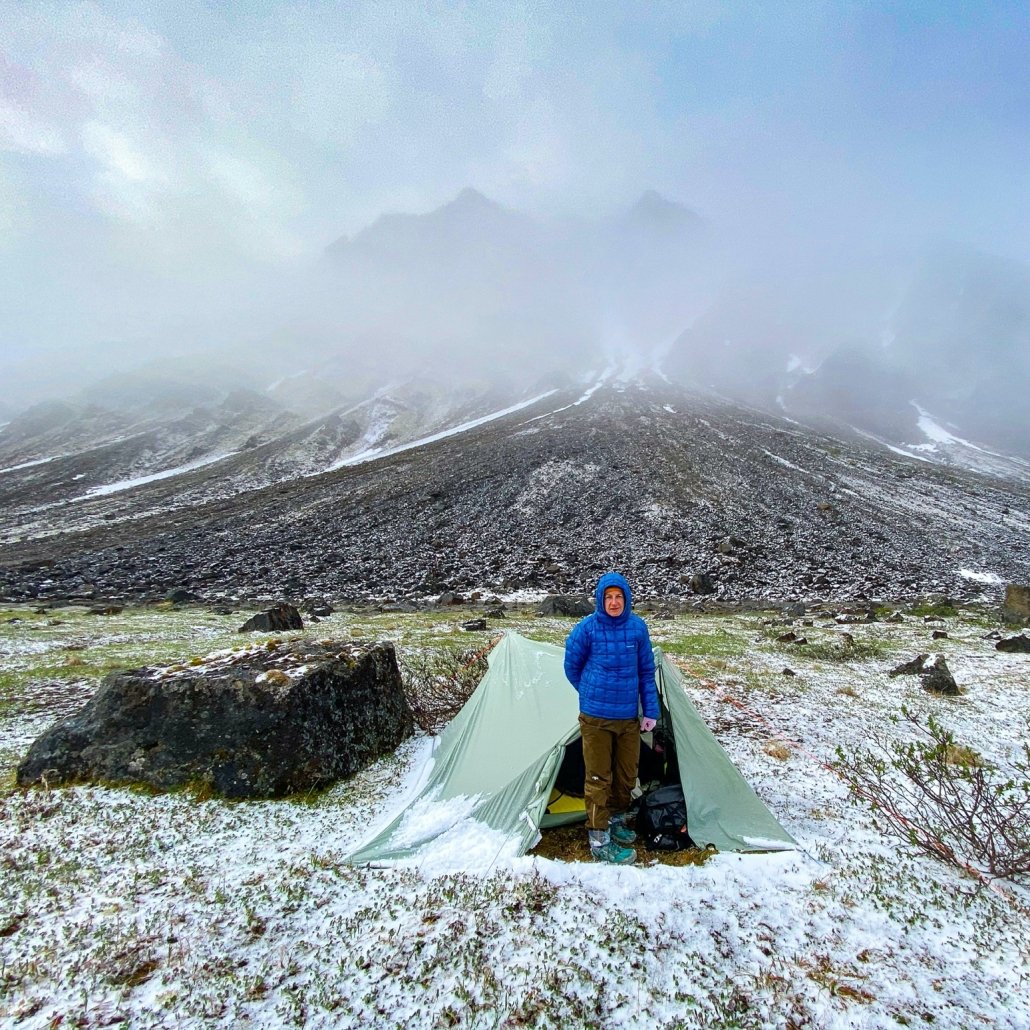
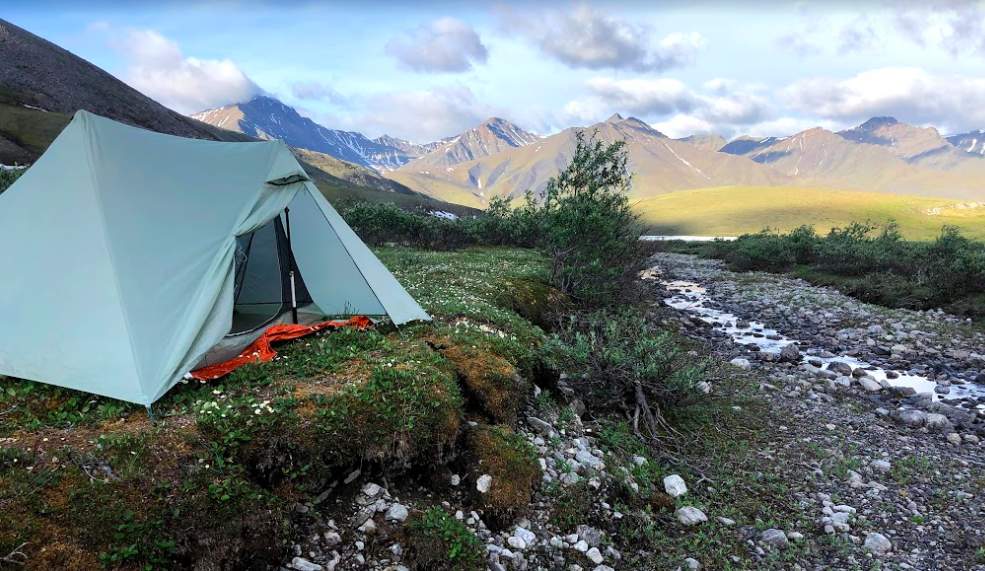
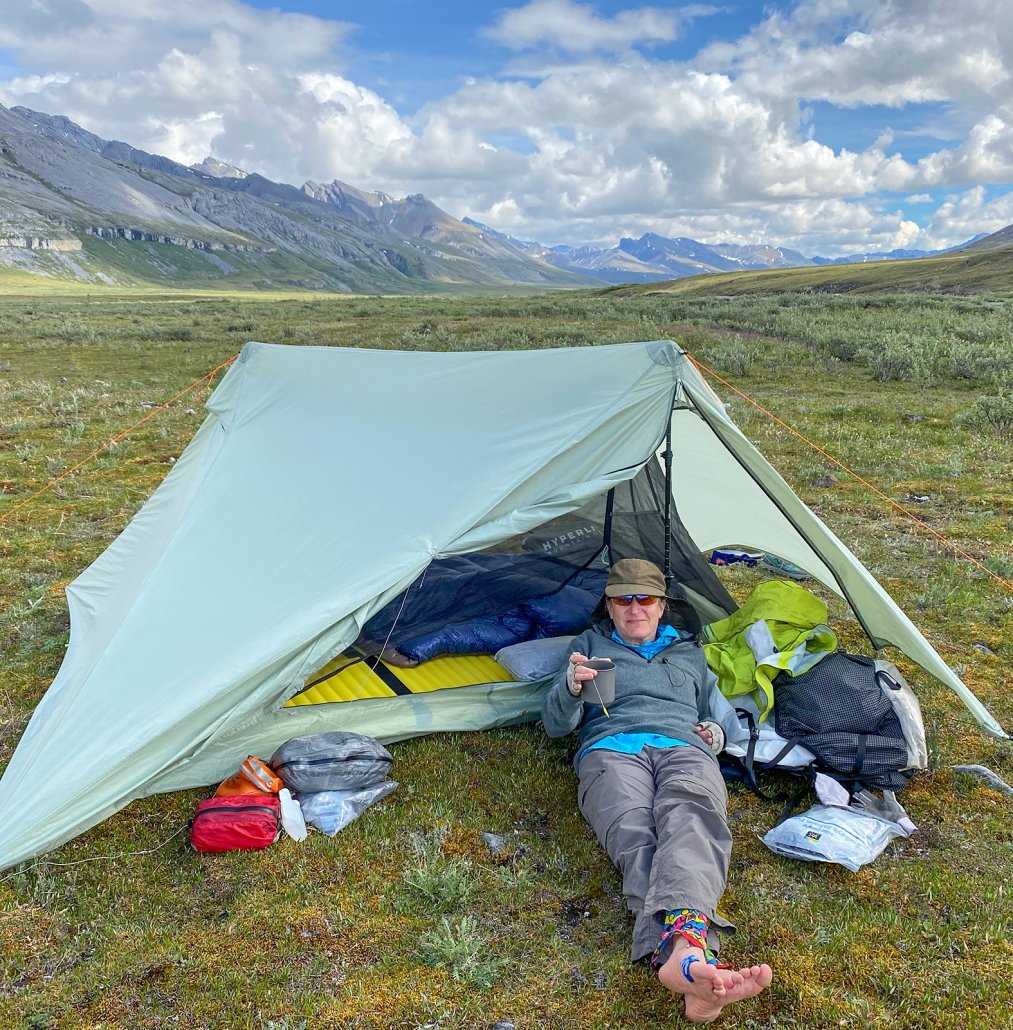
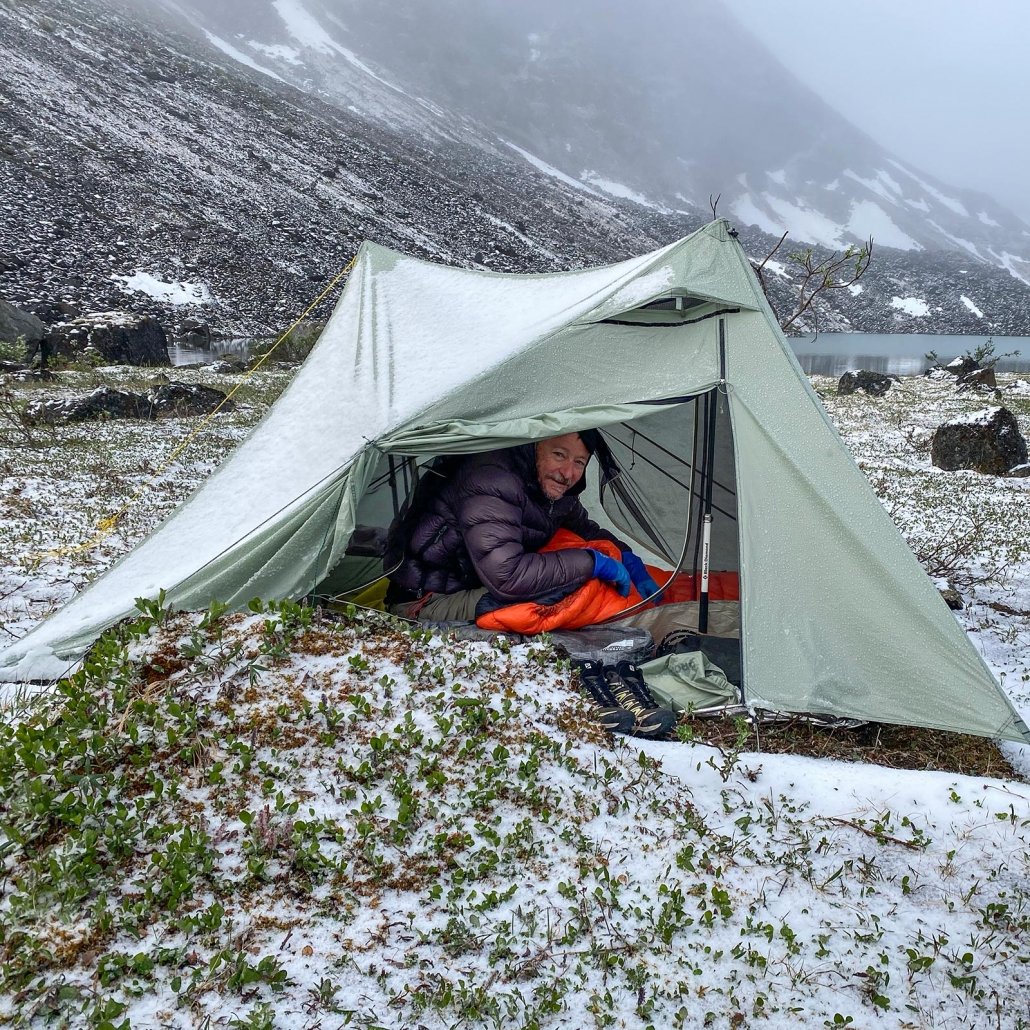
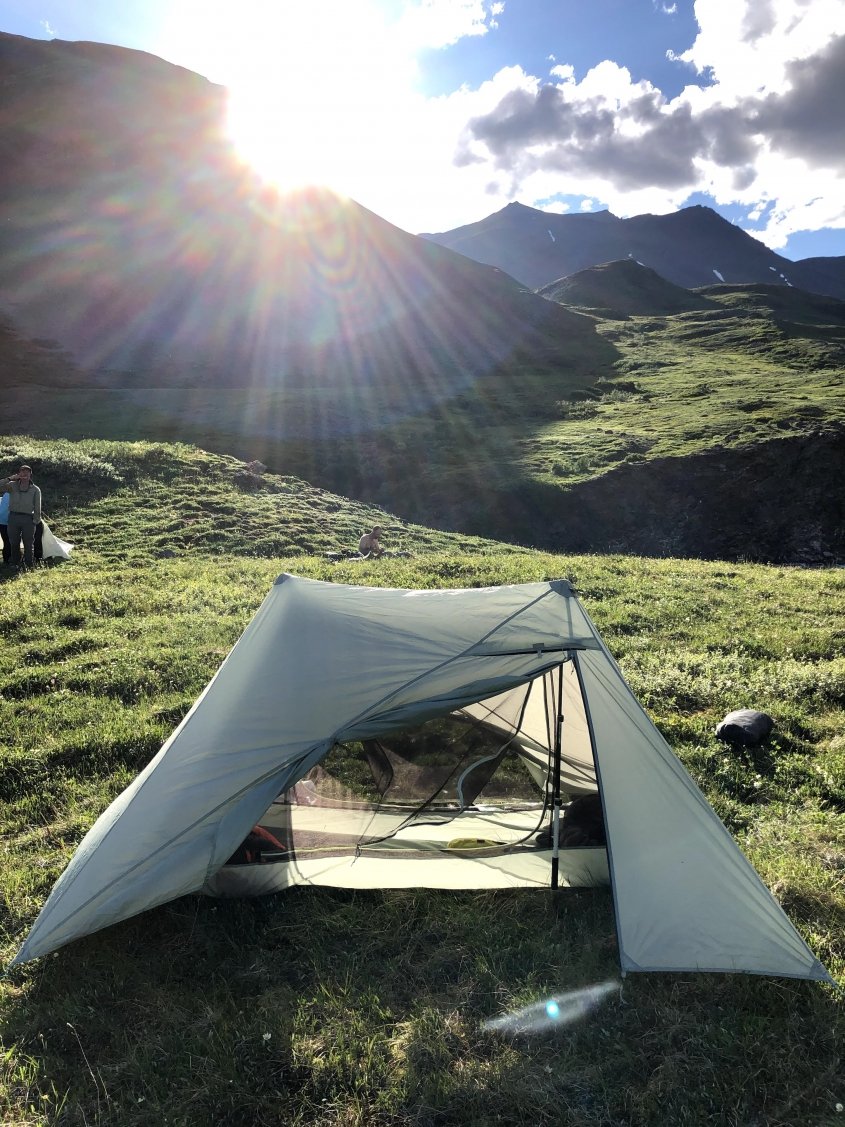
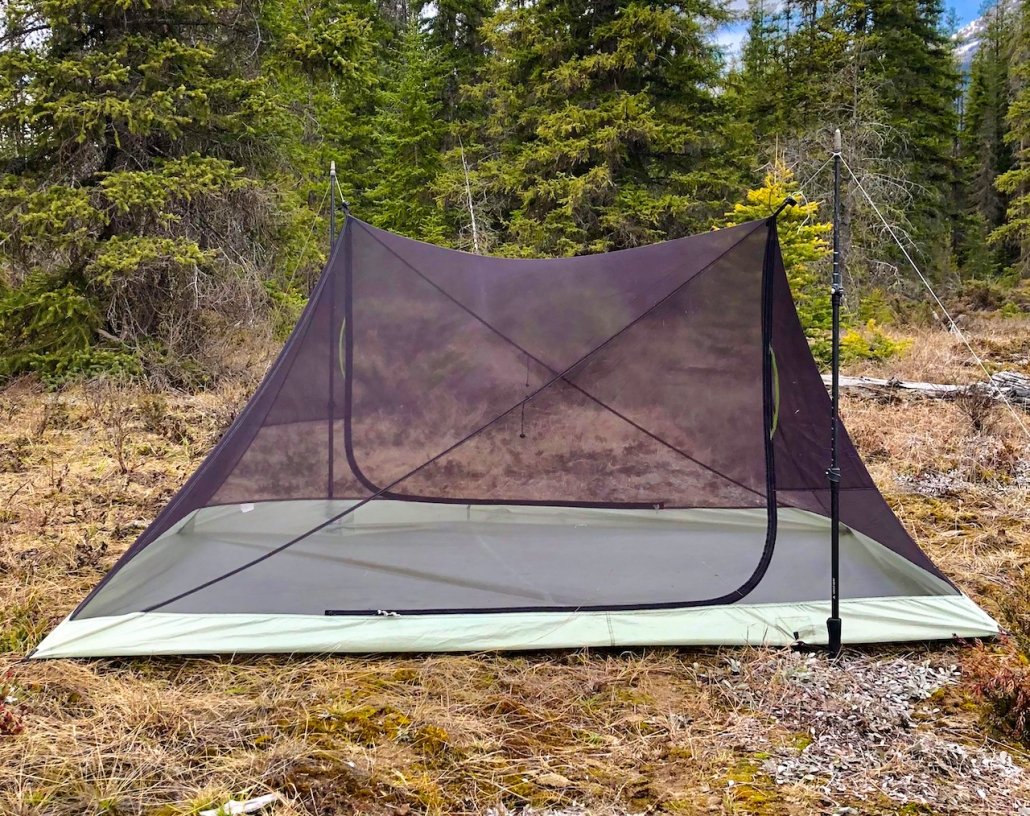
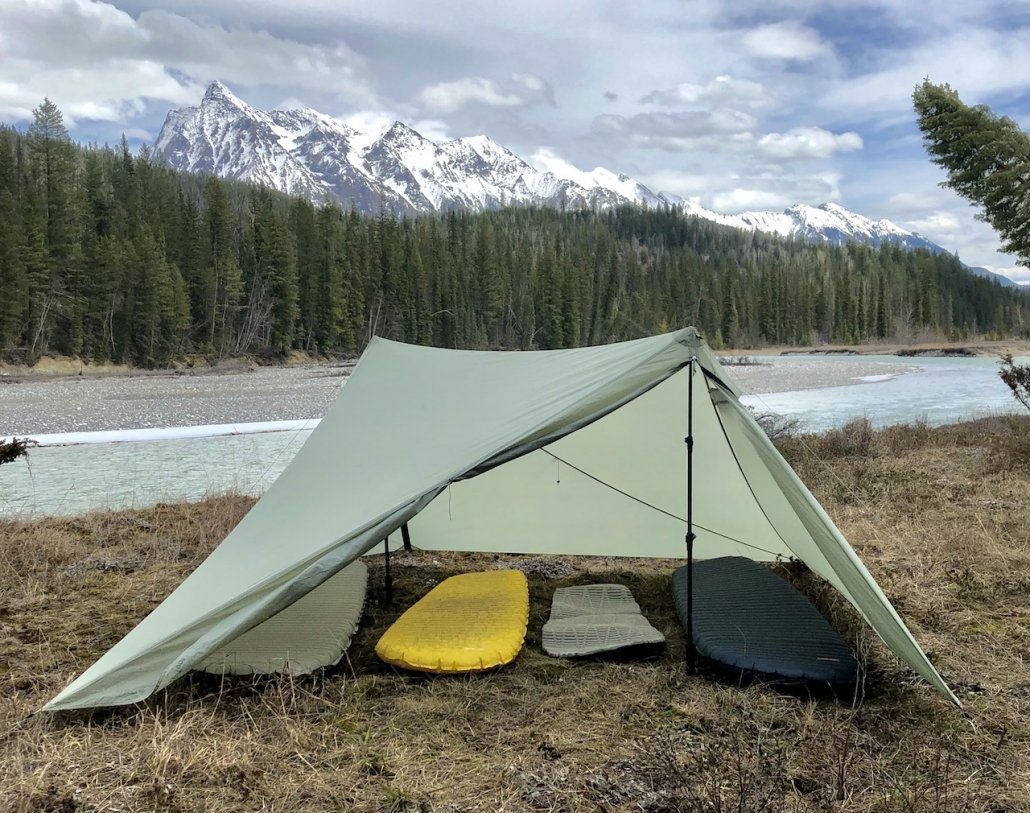


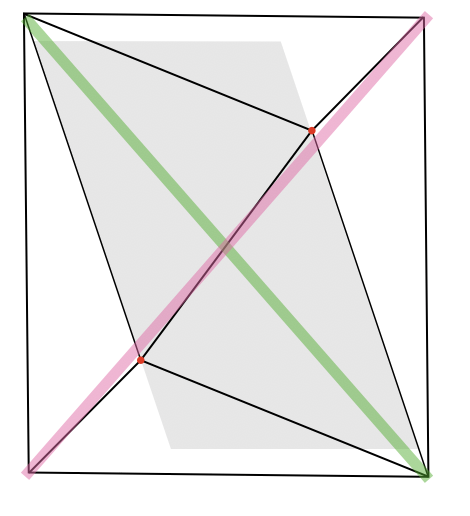


Share this entry